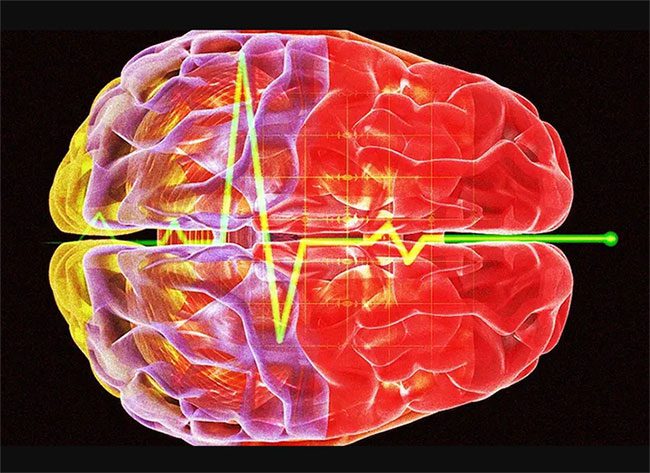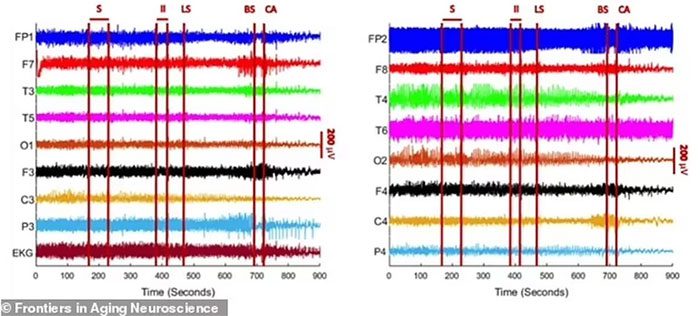The first recorded moments before a person dies may reveal their final thoughts before transitioning to the afterlife.
Recently, neuroscientists in the United States accidentally captured the “activity” of a dying brain while using electroencephalography (EEG) to detect and treat epilepsy in an anonymous 87-year-old man.

There is an increase in brain waves known as gamma oscillations during memory recall.
It is known that the patient unexpectedly suffered a heart attack and died during the study while still connected to the EEG machine, giving researchers a unique opportunity to record approximately 15 minutes of brain activity after the heart stopped beating. This is considered the first successful study measuring brain activity after a person has died.
From these recordings, they discovered a surge in brain waves known as gamma oscillations, which typically occur during dreaming and memory recall. Thus, a dying person may indeed experience what we call a “life review” as their life flashes before their eyes.
This concept may be quite terrifying for some, even when merely thought of briefly, but for scientists, it is seen as an extremely intriguing mystery.
“By generating oscillations related to memory retrieval, the brain may be recalling significant life events just before we die, similar to events reported in near-death experiences,” said Dr. Ajmal Zemmar from the University of Louisville, the study’s author.

EEG images over 900 seconds of the patient after cardiac arrest (Photo: Frontiers in Aging Neuroscience).
This not only provides insight into the mysterious yet frightening moment that we will all eventually experience but also offers several other applications, such as “the ideal organ donation timing,” Dr. Zemmar added. “These findings challenge our understanding of the precise moment when life ends.”
According to DailyMail, some previous studies on the brain activity of dying mice also showed similar gamma activity. This may suggest that this phenomenon is a natural occurrence among species, not just humans. However, scientists have yet to draw definitive conclusions in this case, as the anonymous man was in a state of traumatic brain injury and exhibited seizure activity.
The group’s study is currently published in the journal Frontiers in Aging Neuroscience.


















































